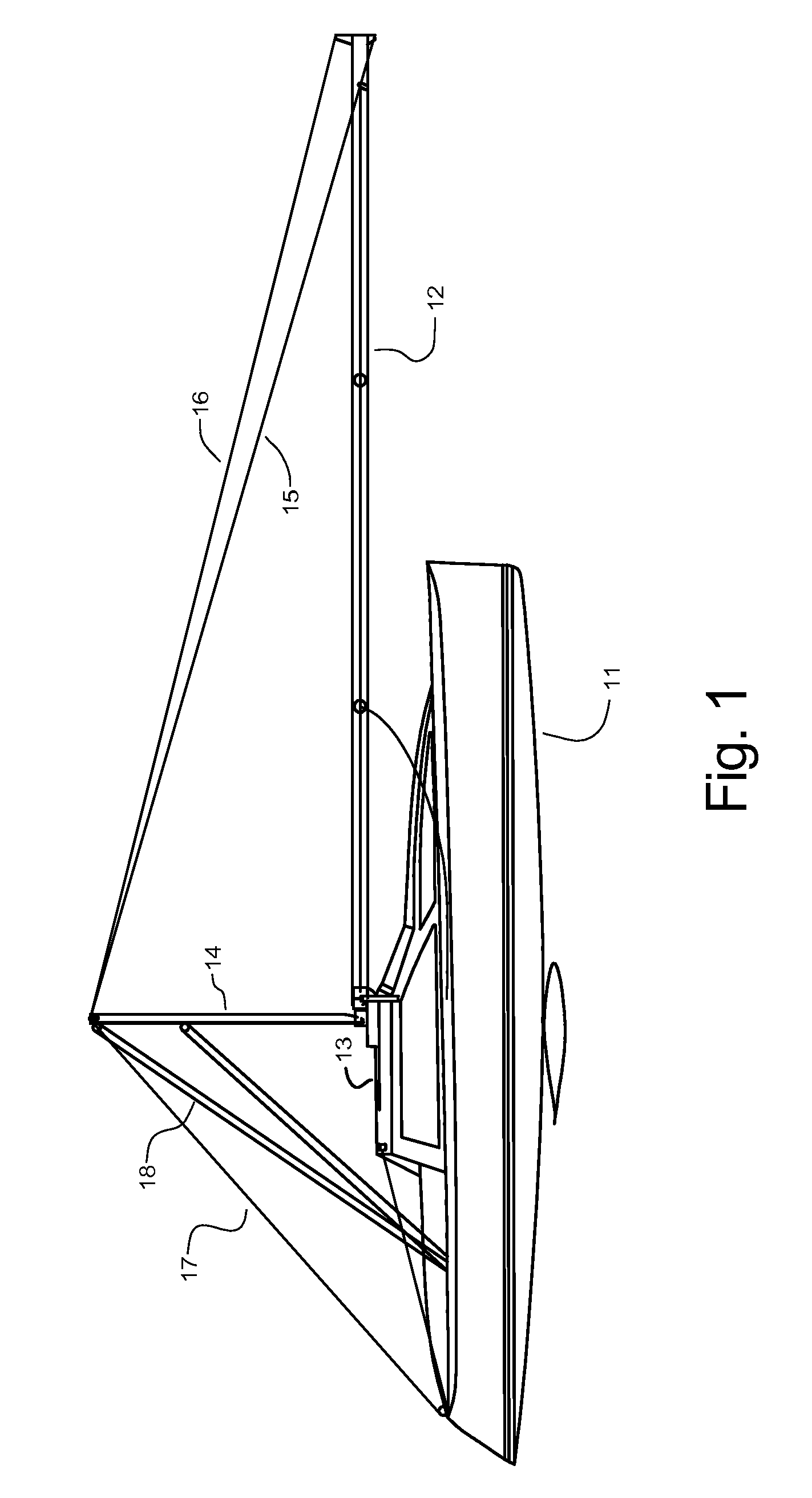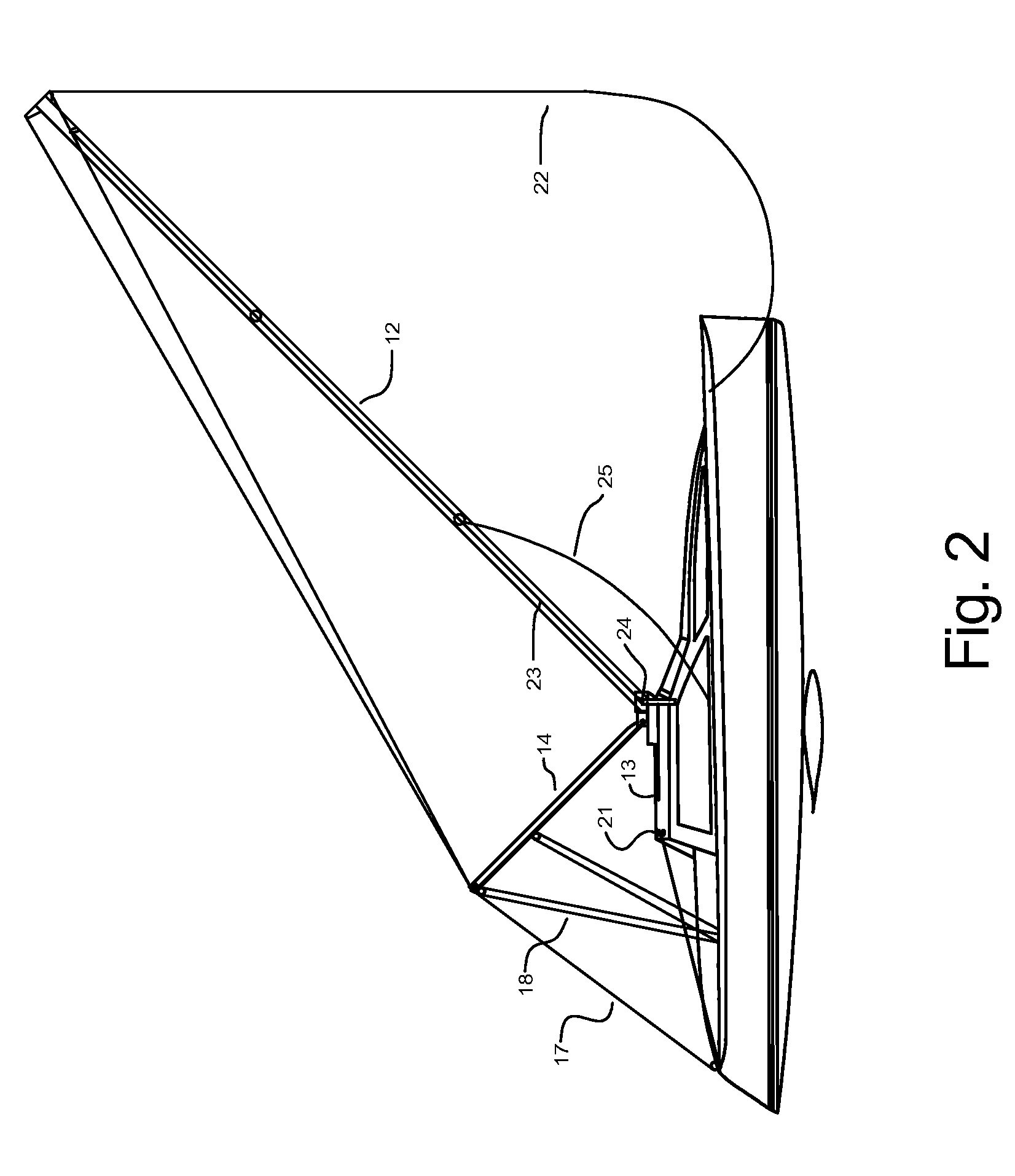Trailerable sailboat with mast raising method
a technology of raising and raising the mast, which is applied in the field of trailerable sailboats, can solve the problems of time, complexity, and expense of boat operation, and the mechanism used to raise the mast is overly complicated, and the mast is lowered and raised
- Summary
- Abstract
- Description
- Claims
- Application Information
AI Technical Summary
Benefits of technology
Problems solved by technology
Method used
Image
Examples
Embodiment Construction
[0026]The present invention relates to trailerable sailboats and specifically to larger trailerable sailboats with lengths that would customarily be limited to commercial trailers.
[0027]An important embodiment of the present invention is to provide for a large trailerable sailboat with dimensions suitable for hauling on the US highway system without the need for a special permit. Currently, a boat length less than forty-five feet as measured from the bow tip to end of the stern and a maximum width of eight and a half feet, will not require a special hauling permit on most US roadways.
[0028]Features of the present invention are a useful advantage for trailerable sailboats with a displacement that allows transport behind a non-commercial truck. For example, the displacement of trailerable sailboats may be approximately 13,000 pounds or less, which enables towing behind a non-commercial truck.
[0029]It is desirable to provide a large trailerable sailboat as it will generally have better...
PUM
 Login to View More
Login to View More Abstract
Description
Claims
Application Information
 Login to View More
Login to View More - R&D
- Intellectual Property
- Life Sciences
- Materials
- Tech Scout
- Unparalleled Data Quality
- Higher Quality Content
- 60% Fewer Hallucinations
Browse by: Latest US Patents, China's latest patents, Technical Efficacy Thesaurus, Application Domain, Technology Topic, Popular Technical Reports.
© 2025 PatSnap. All rights reserved.Legal|Privacy policy|Modern Slavery Act Transparency Statement|Sitemap|About US| Contact US: help@patsnap.com



